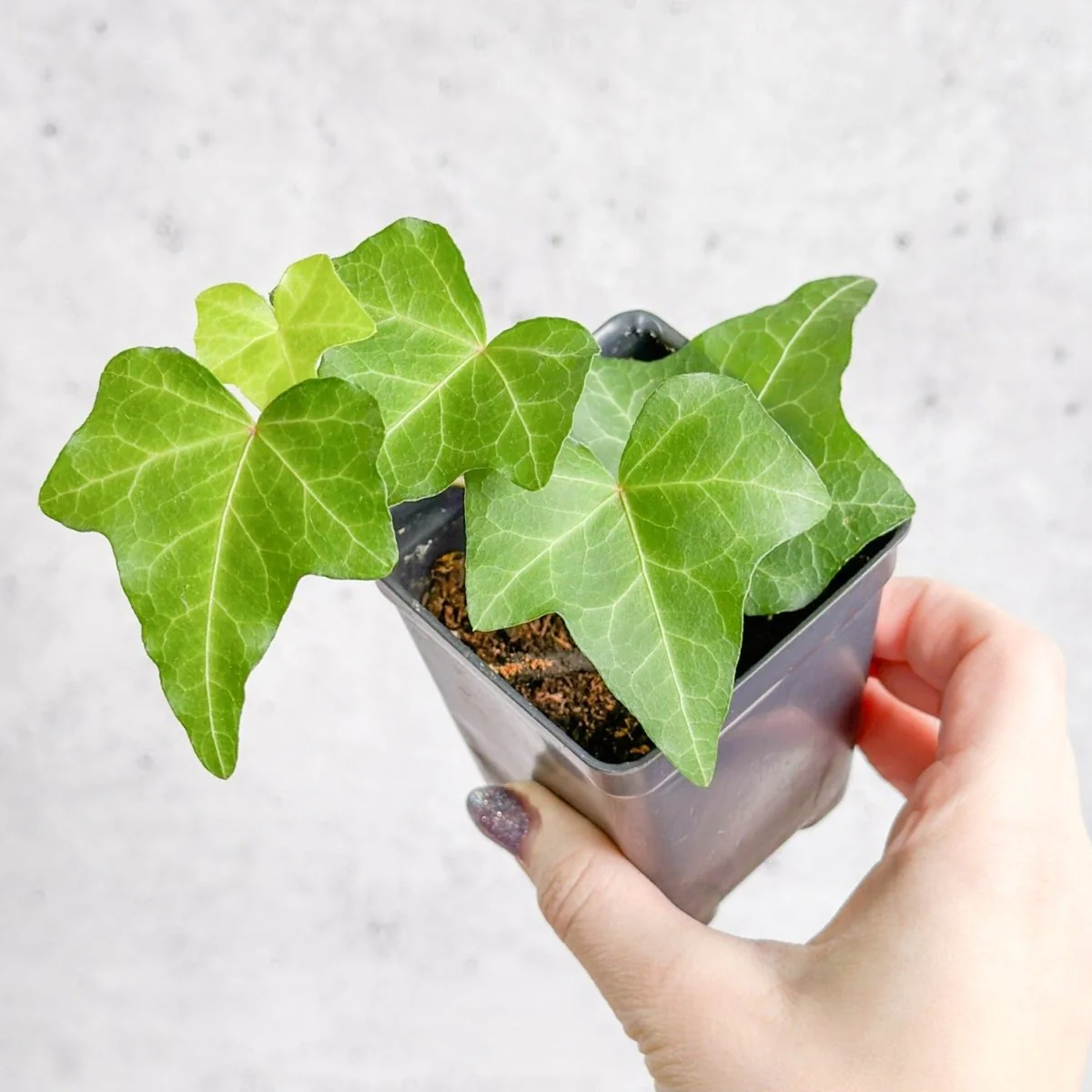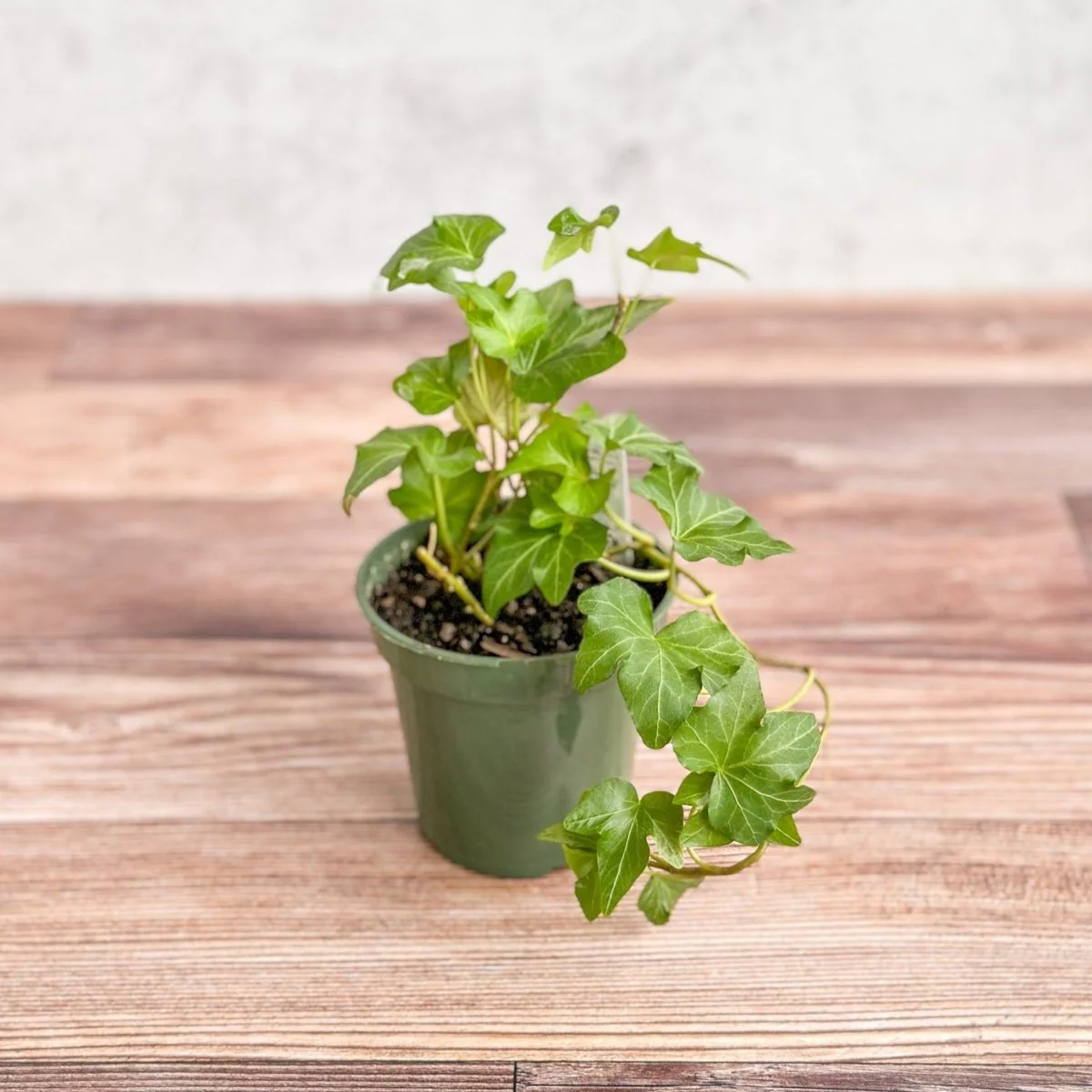-
Detail
Hedera Helix ‘English Ivy’ – A Versatile and Resilient Beauty
The English Ivy (Hedera helix) is a remarkably hardy plant that thrives in a variety of settings. Its robust nature makes it a popular choice for indoor and outdoor use, but its resilience also means it can become invasive if left unchecked outdoors. For this reason, we recommend enjoying English Ivy indoors as a hanging plant or in planters for a lovely cascading effect. Outdoors, it works beautifully as a filler in mixed arrangements, adding a touch of elegance with its trailing vines.
To maintain its rapid growth and lush appearance, keep the soil moist (but not soggy) and place it in bright, indirect light. With proper care, English Ivy will reward you with its fast-growing and versatile beauty!
English Ivy Plant Profile
- Botanical Name: Hedera helix
- Common Names: English Ivy
- Family: Araliaceae
- Native Range: Europe, Scandinavia, and Russia
English Ivy Care Guide
- Care Level: Moderate
- Light: Thrives in medium to bright indirect light.
- Water: Keep soil consistently moist but avoid overwatering.
- Humidity: Tolerates basic household humidity levels.
- Temperature: Adaptable to a wide range of temperatures.
- Pruning: Remove brown or dead leaves as needed to maintain a tidy appearance.
- Feeding: Fertilize monthly during spring and summer with a general-purpose houseplant fertilizer.
- Propagation: Easy to propagate through stem cuttings.
- Growth: Vining, bushy, climbing, and creeping habit makes it perfect for various planting styles.
- Pests: Watch for aphids, mealybugs, spider mites, whiteflies, and scale; treat promptly if detected.
- Toxicity: Toxic to humans and pets; keep out of reach.
Why Choose English Ivy?
English Ivy is not only versatile but also highly decorative, making it an excellent choice for plant enthusiasts looking to add a touch of greenery to any space. Its ability to climb, creep, or spill over planters makes it ideal for creative displays indoors or as part of a vibrant outdoor arrangement.
-
- Aeschynanthus (Lipstick Plant)
- Aglaonema
- Alocasia (Elephant Ear Plant)
- Anthurium
- Begonia
- Calathea
- Epipremnum - Pothos
- Fern Collection
- Ficus
- Hoya (Waxplant)
- Maranta (Prayer Plant)
- Monstera
- Oxalis
- Peperomia
- Philodendron
- Non-Trailing Philodendron
- Vining Philodendron
- Snake Plant (Dracena/Sanseveria)
- Scindapsus
- Tradescantia
-








